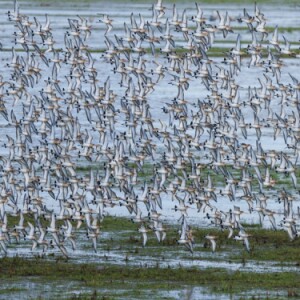Weird duck season
A snap decision late this morning to go to Slimbridge paid ample dividends, because the reserve was teeming with birds. The Bewick's Swans are assembling now after their long migration from Russia, and the winter duck and wader flocks are expanding by the day. I'd hoped to capture a set of images of migrant ducks, in tribute to Rosemary Mosco's Four Seasons of Bird Watching, but following an incident involving a Peregrine at South Lake the Shovelers, Wigeon and Goosander had removed themselves to the estuary, which left me somewhat short.
A male Pintail, though, is surely one of the most beautiful of ducks, and I'm always very happy to post one. I can't decide if I'm most fond of the purple iridescence on his chocolate-brown cheeks, the exquisite moiré patterning on his neck and sides, the extravagantly flowing tri-tone back feathers overhanging his wings, or that pert pointy tail. I have to say that I think the white collar goes a bit far: that vertical stripe makes it look a bit like a false beard held on by elastic. But overall, he's a babe, and to me the best thing about all of these colours and patterns is that they weren't bred into him by obsessive human duck-fanciers, but have evolved naturally to make it harder for predators to work out where to grab him as he flies past them. Nature is incredible.
My second photo tonight shows a flock of Black-tailed Godwits which were also spooked by a Peregrine - though I'm reliant for that information on someone who was less enchanted with the swirling, almost murmurating waders than I was, and managed to search out the culprit who'd put them all to flight. First a flock of Golden Plover went up, followed by some Dunlin, and then the Lapwings, which usually react before anyone else and probably felt as if they had some ground to make up. These three were then joined by some Starlings, and they all zoomed back and forth in an increasingly untidy flock, until the Godwits appeared in perfect formation to demonstrate exactly how synchronised flying should be done. I know I shouldn't make light of all this really - they were completely panic-stricken, as you would be, faced with the very real possibility of being eaten - but it was a genuinely beautiful and impressive thing to watch. They kept up this tight, fast formation flying for a couple of minutes, before coming back down with noticeably less grace and dignity onto the ground. I was amused to note that none of the Curlews that were probing the boggy ground for food at the point when everyone else took off even lifted their heads through the whole performance - there's one just below the left hand side of the Godwit flock in this photo, demonstrating the point.


Comments
Sign in or get an account to comment.


